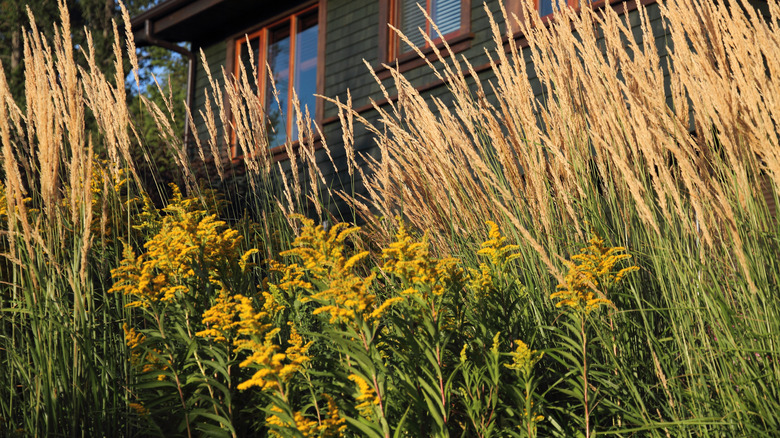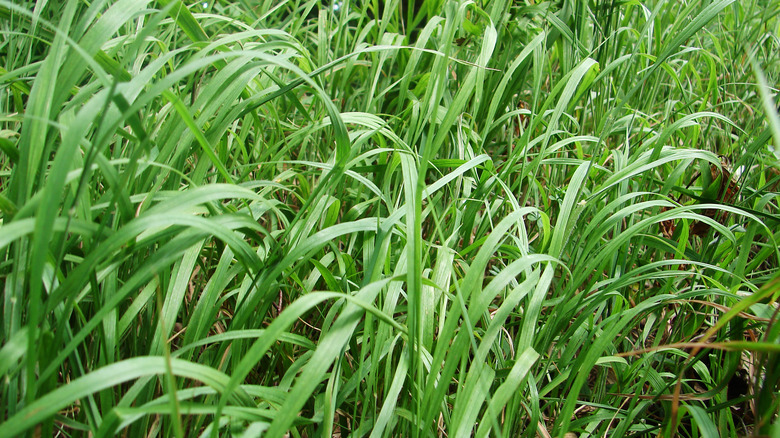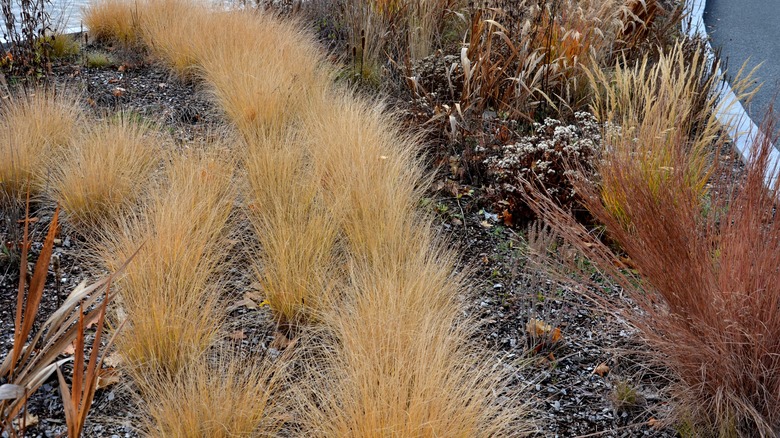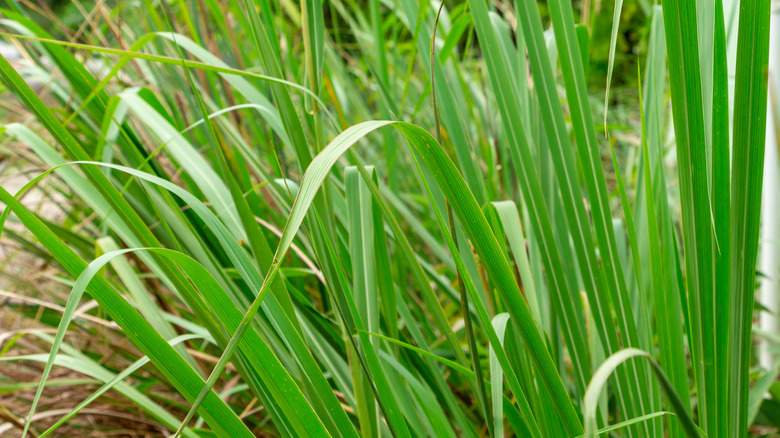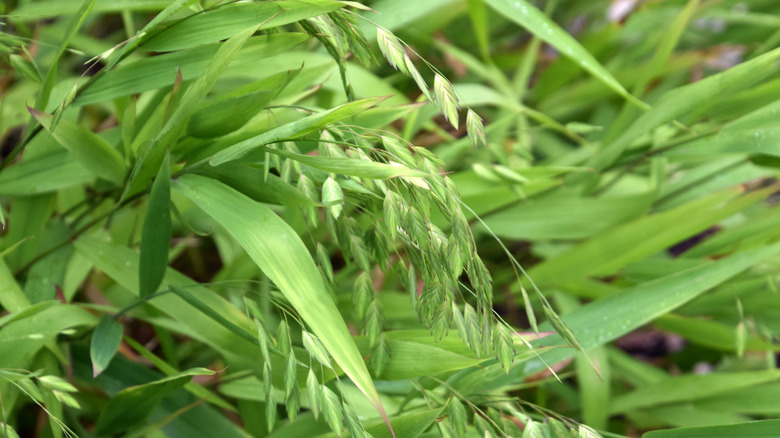Here Are Four Native Ornamental Grasses You Should Consider For Your Yard
People often lean toward flowers, trees, and shrubs when designing an ornamental landscape. You may feel inclined to overlook grass options since those are typically more boring than flowers in every hue; however, choosing native plants like these grasses provides many benefits to your landscape and the wildlife living within it. If you want to incorporate ornamental grass into your garden, try big bluestem, shore little bluestem, eastern gamagrass, and northern sea oats. There are many varieties to choose from, but these four are easy to get going and will wow you with their colors and elegance.
Ornamental grasses grow taller than turfgrass, so they work well in flower beds, planters, and along walkways. Some species can spread quickly, like the northern sea oats, and should be planted with consideration if you don't want them overtaking the available space. Even though the plants die back in the winter, they still provide some interest to the landscape that other plants can't offer when dormant. They're worth putting in the garden if you want to elevate your landscape and have something to look at all year long.
Big bluestem
Big bluestem (Andropogon gerardii) is a perennial grass native to the United States and Canada. It can be found throughout most of the US, except for the west coast. It thrives in full sun exposure and will wilt in the shade, so it's best to plant it away from houses or tall trees when possible. Big bluestem is tolerant of both sand and clay soils in USDA zones 4 to 9. It can reach up to 8 feet after blooming and spreads out up to 3 feet, making it a great filler plant for large areas. The plant is slow to get established, but with a little patience, you'll end up with a drought-resistant grass that readily spreads via rhizomes. It sometimes spreads by seeds, though they often aren't viable.
This ornamental grass will look its best near water since it grows taller in moist soil. Plant it near ponds or streams for a beautiful, naturalized look, or use it on flower bed borders or along walkways. It functions as a privacy screen and looks beautiful while doing it. The grass will be bluish-green in the summer and a rusty orange in the fall. You can leave the brown stems over winter or mow them to the ground to encourage fuller growth in the spring. It's an important plant for wildlife since butterflies like to lay their eggs on it, so adding it to pollinator gardens will give you plenty of butterflies to watch.
Shore little bluestem
Shore little bluestem has several nicknames, including dune bluestem, coastal little bluestem, and seaside beard grass. It even has two scientific names, Andropogon littoralis and Schizachyrium littorale. Regardless of what you call it, it's known as one of the more colorful ornamental grasses that's quite useful. This ornamental grass also has a bluish-green tint, but it sometimes looks purple, adding an array of colors to the landscape. When grown in ideal conditions, it can reach up to 5 feet, but it will typically peter out at 2 feet in subpar conditions. It's native to the eastern coast of the US from southern New England to Texas. It can also be found around the Great Lakes, blooming into a rainbow of subtle colors with purple, green, white, and brown from August to October, giving the garden some extra color in the fall.
This grass has a lot of use in coastal gardens, especially in beachy areas. It's a practical solution when planted around sand dunes, preventing erosion and keeping sand in place. It also functions as a safe place for mammals and birds to hide, so it's good to include if you want to encourage biodiversity around your home. Like other native ornamental grasses, shore little bluestem needs to stay moderately moist to be happy. When planted near water, it should be low maintenance, especially since it has no major pest problems.
Eastern gamagrass
Tripsacum dactyloides, or eastern gamagrass, is native to a majority of the eastern and southeastern United States. It has a rich history of feeding native animals, like elk and buffalo, back in the day, but it was removed from most of the land thanks to the mass farming of livestock and grain. While you may not find it as readily available as it once was, you can put a piece of this North American native in your landscape as a decorative ornamental grass. It's a relative of corn, and you can see the resemblance in the wide leaves that come to a point. The foliage is a medium to deep green and has brown blooms from April to September.
Eastern gamagrass is good for wildlife and the landscape since it blooms much earlier than other ornamental grasses. You'll add color to your garden while other plants are still waking up, and butterflies and mammals will have a plant to munch on or hide in. The plant ranges from 4 to 8 feet with a diameter of 4 feet, so one plant can help cover a lot of space. The biggest problem is that this grass can be difficult to establish in the garden. The seeds require cold stratification, so you can either plant them outdoors in late fall or winter or keep them in the refrigerator for ten weeks before planting them outdoors in April or May.
Northern sea oats
Northern sea oats (Chasmanthium latifolium or Uniola latifolia) are native to the eastern US, as far west as Arizona, and down to northern Mexico. It can thrive in USDA zones 3 to 8, giving it a lot of versatility across most of the country. It grows 2 to 5 feet tall with a spread of up to 2½ feet. This ornamental grass is a bit more cooperative since it can tolerate partial shade, but like other grasses, it will look its best when it receives as much sunlight as possible. This plant thrives in moist to wet conditions, but even though it can handle wet soil, it still needs good drainage; standing water isn't good for the grass.
This grass is a beautiful green color with green blooms. It has a short blooming period in August and September, so enjoy it while it lasts. Though this grass is beautiful, it has a weedy growth habit. It readily spreads by both rhizomes and seeds, so only plant it in an open area if you're okay with it spreading. If you want to grow it in a flower bed, divide it every couple of years and remove the blooms before they drop seeds. Though its growth habit can create a lot of maintenance, it's otherwise a low-maintenance plant as long as it has enough water and sunlight. It doesn't have any major pests, and it will attract plenty of birds.
